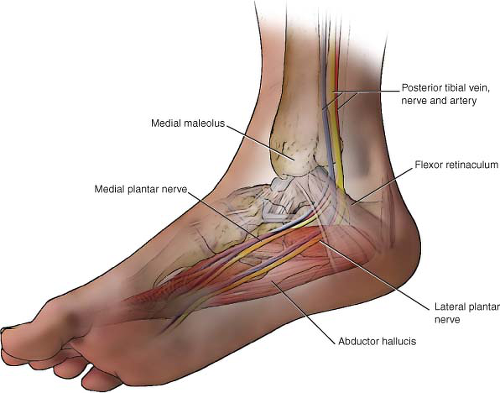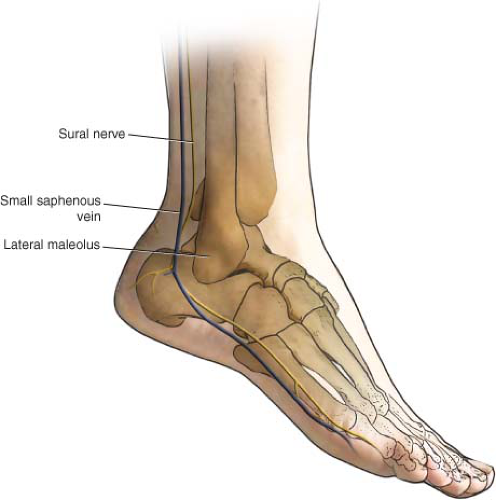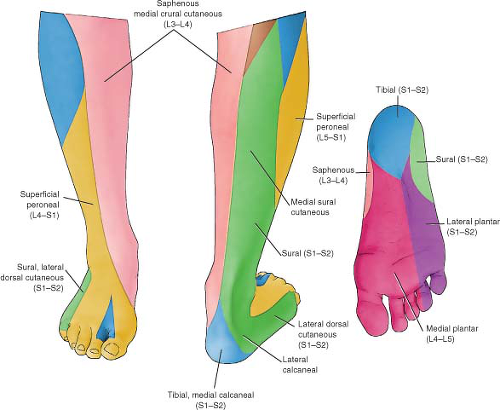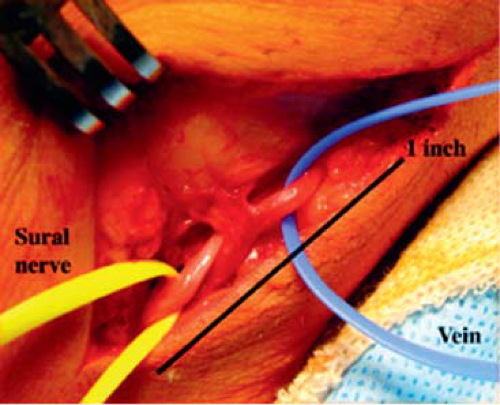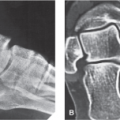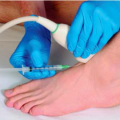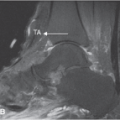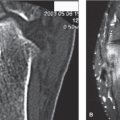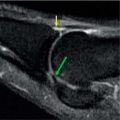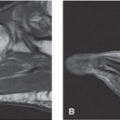Abnormalities of the Sural Nerve at the Ankle
Anatomic Considerations
The sural nerve is a branch of the posterior tibial nerve (Fig. 13.1). The sural nerve passes from the posterior calf around the lateral malleolus to provide sensory innervation of the posterior lateral aspect of the calf and the lateral surface of the foot and fifth toe and the plantar surface of the heel (Figs. 13.2 and 13.3). The sural nerve is subject to compression at the ankle and is known as boot syndrome because it is associated with compression of the nerve by boots that are too tight. Because the sural nerve is a pure sensory nerve, it is commonly sacrificed when a nerve biopsy is needed to diagnose peripheral neuropathies (Fig. 13.4).
Clinical Correlates
Saphenous neuralgia is caused by entrapment and compression of the saphenous nerve anywhere along its course, with compromise of the nerve most commonly caused by ganglion cysts and tenosynovitis arising from the peroneal tendon sheaths as well as ganglion cysts arising from the calcaneocuboidal joint (Fig. 13.5). The saphenous nerve is frequently traumatized during vein stripping and harvest procedures, with the infrapatellar branch of the saphenous nerve frequently damaged during total knee arthroplasty (Fig. 13.4). The nerve can also be damaged by trauma to the ankle, including sprain, fracture of the fibula, fracture of the base of the fifth metatarsal, dislocation,
and crush injuries (Figs. 13.6 and 13.7). Patients suffering from compromise of the sural nerve at the ankle will complain of numbness and dysesthesias radiating into the posterior lateral aspect of the calf and the lateral surface of the foot and fifth toe and the plantar surface of the heel.
and crush injuries (Figs. 13.6 and 13.7). Patients suffering from compromise of the sural nerve at the ankle will complain of numbness and dysesthesias radiating into the posterior lateral aspect of the calf and the lateral surface of the foot and fifth toe and the plantar surface of the heel.
Electrodiagnostic testing should be considered in all patients who suffer from sural nerve dysfunction to provide both neuroanatomic and neurophysiologic information regarding nerve function. Magnetic resonance imaging and ultrasound imaging anywhere along the course of the sural nerve are also useful in determining the cause of sural nerve compromise (Fig. 13.8). Plain radiographs and/or computerized tomography of the ankle should be obtained in all patients who have trauma to the ankle to rule out fractures of the lateral ankle which can damage the sural nerve (Fig. 13.9).
Stay updated, free articles. Join our Telegram channel

Full access? Get Clinical Tree


